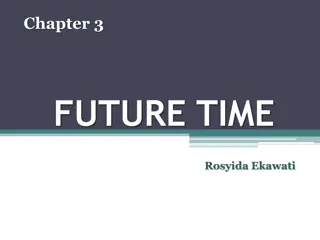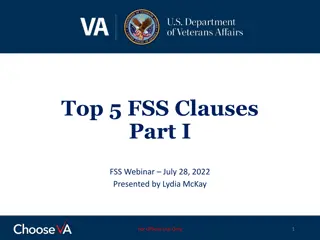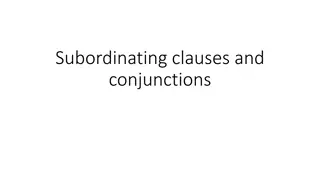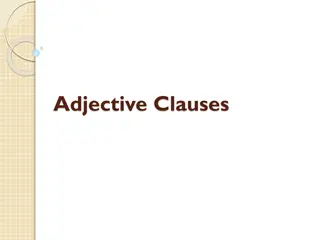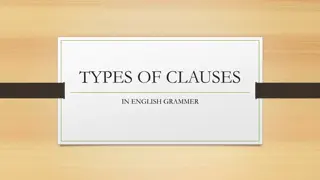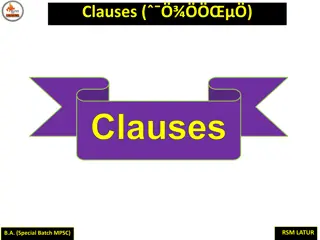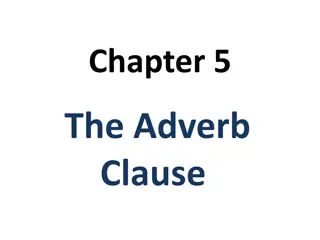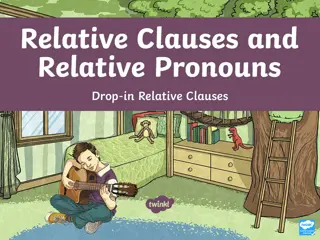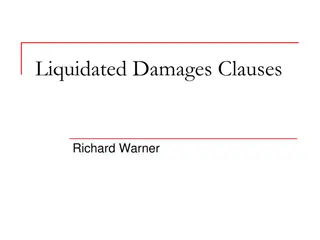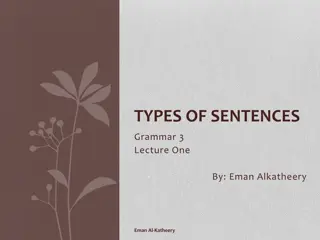General Clauses Act: A Comprehensive Overview
The General Clauses Act applies to all branches of law in India, providing provisions for construction, definitions, and uniformity in central acts. Initially enacted in 1867, it has served as a model for State General Clauses Acts, extending its principles to various legal documents beyond legislation. This act ensures clarity, precision, and consistency in legal terminology and interpretation.
Download Presentation

Please find below an Image/Link to download the presentation.
The content on the website is provided AS IS for your information and personal use only. It may not be sold, licensed, or shared on other websites without obtaining consent from the author.If you encounter any issues during the download, it is possible that the publisher has removed the file from their server.
You are allowed to download the files provided on this website for personal or commercial use, subject to the condition that they are used lawfully. All files are the property of their respective owners.
The content on the website is provided AS IS for your information and personal use only. It may not be sold, licensed, or shared on other websites without obtaining consent from the author.
E N D
Presentation Transcript
The General Clauses Act is applies to all branches of law. It contain provisions as to the construction of General Clauses Acts and other laws applied in India. The definition contained in the Act apply only where the context does not otherwise required.
Shorten the language of the central acts. To provide uniformity of expression in central acts by definitions of series of terms in common use. State explicitly certain convenient rules for the construction and interpretation of central acts. To guard against slips and oversights by importing into every act certain common form clauses which otherwise ought to be inserted expressly in every central act.
Initially every State has its own General Causes Act which applies to the State Acts. The first General Clauses Act was enacted in 1867 in Madras and Bombay. The Central Act of 1897 has stood the test of time. It value in avoiding superfluity of language in statues has been commended by the courts.
There can be no better testimony of its utility than the fact that courts have, on considerations of equity, justice and good conscience, thought fir to extend its principles not only to subordinate legislation, but also to private documents. It has served as model for all State General Clauses Acts. It has expressly applied to the interpretation of Constitution by Article 367 of the Constitution.
SECTIONS 1. Short title. Section 2. [Repealed.]. GENERAL DEFINITIONS Section 3. Definitions. Section 4. Application of foregoing definitions to previous enactments. Section 4A. Application of certain definitions to Indian Laws.
Section 5. Coming into operation of enactments. 5A. [Repealed.]. Section 6. Effect of repeal. Section 6A. Repeal of Act making textual amendment in Act or Regulation. Section 7. Revival of repealed enactments. Section 8. Construction of references to repealed enactments.
Section 9. Commencement and termination of time. 10. Computation of time. Section 11. Measurement of distances. Section 12. Duty to be taken pro rata in enactments. Section 13. Gender and number. Section 13A. [Repealed.].
Section 14. Powers conferred to be exercisable from time to time. Section 15. Power to appoint to include power to appoint ex officio. Section 16. Power to appoint to include power to suspend or dismiss. Section 17. Substitution of functionaries. Section 18. Successors. Section 19. Official chiefs and subordinates.
Section 20. Construction of orders, etc., issued under enactments. Section 21. Power to issue, to include power to add to, amend, vary or rescind notifications, orders, rules or bye-laws. Section 22. Making of rules or bye-laws and issuing of orders between passing and commencement of enactment Section 23. Provisions applicable to making of rules or bye-laws after previous publication. Section 24. Continuation of orders, etc., issued under enactments repealed and re-enacted.
Section 25. Recovery of fines. Section 26. Provision as to offences punishable under two or more enactments. Section 27. Meaning of service by post. Section 28. Citation of enactments. Section 29. Saving for previous enactments, rules and bye-laws. Section 30. [Repealed.].
Section 5 to 13 deals with GENERAL RULES OF CONSTRUCTION. These sections divided into two sections: Commencement a d repeal of enactments. (it is more important in terms of quality and deals with life of enactment) Provides rules of construction. (it deals with certain matters such as time, distance ,rate of duty, gender and number and the like. i. ii.
It does not contained any detailed provisions relating to use in interpretation of marginal notes, headings, punctuations and the like.
Section 6 of the Act deals with repeal. It main object is to reverse the common law of rule that a repeal obliterates the statues for all purpose for the future. Whenever an enactment has to incorporate a body of person, it has to expressly provide in a separate section, for many matters dealing with the effect of incorporation.
Construction of notifications, etc. issued under enactments. Power to issue, to include power to add to, amend, vary or rescind notifications, orders, rules, or bye- laws. Making of rules or bye-laws and issuing of orders between passing and commencement of enactment. Provisions applicable to making of rules or bye- laws after previous publication.
Continuation of orders, etc. issued under enactments repealed and reenactment. Recovery of fines. Provisions as to offence punishable under two or more enactments . Meaning of service by post. Citation of enactments.
Saving of previous enactment, rules and bye-laws. Application of Act to Ordinances. Application of Act to Acts made by the Governor General. Construction of Reference to local Government of province.



